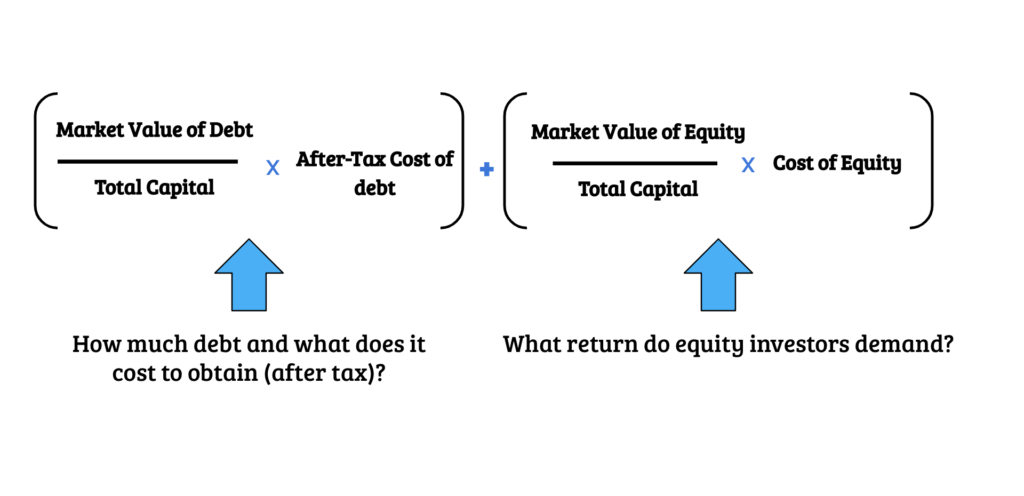In finance and investing, WACC stands for Weighted Average Cost of Capital.
WACC is a very important number because it plays a huge part in the valuation of companies and projects.
WACC answers:
How much does it cost to attract debt and equity investment?
WACC is used to
- Discount future cash flows to present dollars
- As a minimum hurdle rate for investments (e.g. you want the WACC to be less than the return on invested capital)
- Determine what it ‘costs’ to get debt and equity investors to invest in your project or a public company
The WACC Formula

Where to find the WACC Inputs
- Market value of debt: use market values (if you can find them), or use the values on the most recent balance sheet (if you have to)
- Cost of debt: use the market values for yield or coupon payments. Sometimes you can get this data from third-party sources like Bloomberg. Alternatively, get interest expense from the income statement (and accounting notes, if available) and divide it by total debt. E.g. $193 in interest payments / $2,000 of total debt = 9.65%.
- After-tax cost of debt: In most countries interest on debt is tax deductible. To calculate it, start with the cost of debt (above) and multiply by (1 – tax rate). E.g. 9.65% x (1 – 30%) = 6.755% after tax.
- Market value of equity: I use total equity value or market capitalisation. Market cap = share price x the number of shares on issue.
- Total capital: Market value of equity plus market value of debt.
- Cost of equity: usually, this calculated with CAPM (see our video above). Alternatively, for a rough rule of thumb you can use the company’s earnings per share divided by share price (the opposite of a P/E ratio!).
Why I don’t trust WACC
It’s vital you get the discount rate correct when you’re doing a valuation (your finances depend on it!). While WACC is the most common way to value shares it also has some serious flaws.
For example, it uses Beta. Beta is a historical measure of volatility relative to the market. What’s more, each of the WACC inputs (e.g. capital structure, interest rates, etc.) are constantly changing and can be very subjective.
As with all of our models and valuations, remember, the garbage-in-garbage-out (GAGO) rule applies!
[CP_CALCULATED_FIELDS id=”8″]
[ls_content_block id=”27643″ para=”paragraphs”]



